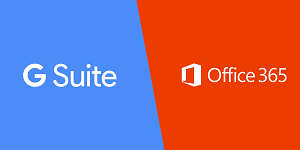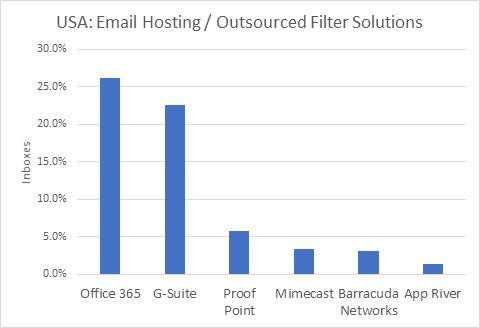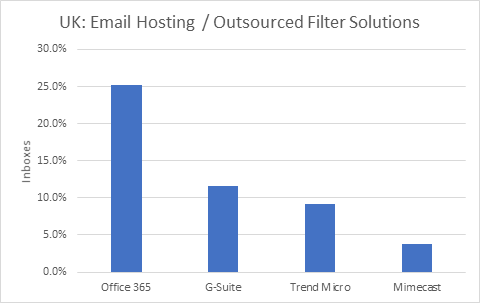 It’s a common misconception that B2B email junk filtering is different to B2C email spam filtering. Things have changed.
It’s a common misconception that B2B email junk filtering is different to B2C email spam filtering. Things have changed.
Analysis of B2B lists shows new stats. Over 50% of B2B inboxes now have the same junk filtering as B2C lists. That means the best practices to avoid B2B deliverability issues are the same as for B2C.
Previously B2B spam filtering methods were different to the junk filtering methods used by consumer email inboxes, such as Gmail, Yahoo, AOL etc.
B2B junk filters used to managed by the IT department. Causing a proliferation of different methods, mostly using simplistic rules, based on spam trigger words and email attributes such as images, attachments, graphical content. Sender reputation was not scored and used as a primary driver of inbox placement.
Office 365 and G-Suite Adoption
The big trend of recent years for business has been the adoption of Office 365 and G-Suite. The adoption stats are remarkable.
Outsourcing email hosting to Microsoft and Google rather than running in-house Microsoft Exchange or other email server is often the sensible business choice.
Here are the statistics:

Between them, Microsoft and Google control almost 49% of B2B inboxes in the USA.

In the UK G-Suite is not as popular Office 365. Overall, whilst lagging the USA, Microsoft and Google control almost 37% of UK B2B inboxes.
Both these charts are based on analysis of email address on B2B lists after removal of consumer inboxes (Gmail, Outlook.com, Yahoo etc.).
The analysis included just over 62,000 B2B addresses. Note that the filters used vary by industry sector. As an example, the B2B lists did not include educational addresses. In the USA Gaggle.net junk filter has high adoption amongst K12 schools.
The trend to move company inboxes to Microsoft and Google hosting is continuing; the numbers are set to rise.
This means B2B email marketers, like B2C, need to pay attention to deliverability reputation score. Inbox placement, avoiding the spam filter, is primarily about sender reputation – check these seven tips to email deliverability. In most cases the crux to hitting the inbox is making relevant email that engages. With the except of inboxes protected by less sophisticated solutions such as Proof Point, which doesn’t consider engagement at all.
Laura Atkins from Word to the Wise shared with me that “whilst the same filtering engine is used on Office 365 and G-Suite as their B2C counterparts Outlook.com and Gmail, the weighting used in the algorithms differ. Such as in the measurement of SCL (spam confidence level) and BCL (bulk complaint level) at Microsoft”.
Finally the amount of Microsoft and Google applied spam filtering of B2B list emails is further boosted because B2B lists usually include consumer email addresses. These are often used by very small companies or employees who wish to separate work-related brand emails from their official work account.
The number of consumer like email address on the B2B lists in this study varied from 14% to 39% of the list.
Making over 50% of B2B email inboxes managed by big ISPs and using B2C type junk filtering. B2B and B2C spam filtering really is based on the same concepts and algorithms now.
